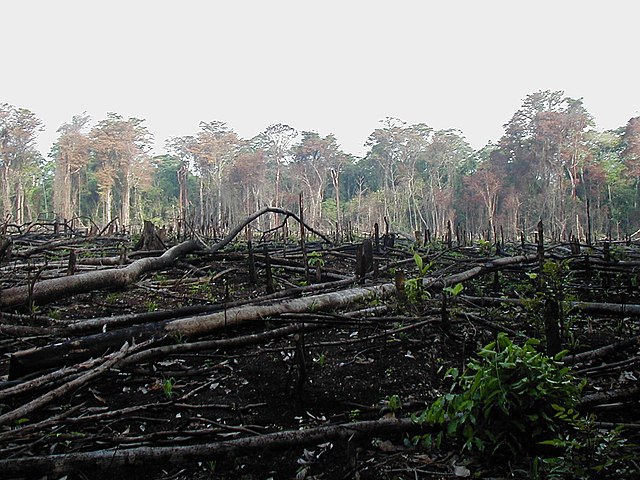
Trees: Nature’s Superheroes
April 25, 2023By Ariana Piscoya, 2023 Future Blue Youth Council member
Featured Image: “Jungle Whales” by Julianne Ho (Taipei, Taiwan)
April 28th is approaching. What does that mean? It’s almost Arbor Day!
This important holiday celebrates the cultivation, upkeep, and preservation of trees. As we get ready to organize a tree-planting campaign in our community, express our love for forests through art, or invite others to advocate for the conservation of green plants, we need to understand the vital role of trees on our planet.
There are uncountable ways in which trees benefit our ecosystem. We can consider them Nature’s superheroes that help us fight pollution and protect our valuable oceans.
For example, every year, more CO2 builds up in our atmosphere, and one-quarter of this gas is absorbed by the ocean, resulting in ocean acidification. This phenomenon refers to a reduction in the pH of the ocean as a result of carbon dioxide reacting with water to form carbonic acid. It has detrimental consequences for marine life, including limiting coral growth and preventing shelled organisms from forming strong carapaces. To confront this problem, we depend on trees. According to the European Environment Agency, in one year, a mature tree absorbs about 22 kg of carbon dioxide from the atmosphere, releasing oxygen in exchange.
Water pollution is another problem that trees help us combat. After a rainy day, the stormwater that runs off of urban surfaces picks up pollutants like oil, pesticides, microplastics, and more. Since city surfaces can’t absorb water, the contaminated runoff travels long distances until it reaches creeks, rivers, and marine ecosystems. Fortunately, the leaves and branches of trees intercept a significant amount of rainwater and then release it into the air as oxygen and water vapor, reducing the amount of water that reaches the ground. In addition, tree roots and leaf litter block water and harmful substances from flowing into the soil, preventing erosion and flooding.

“Above and Below the Water” by Jean Chung (New York, USA)
We’ve just mentioned some of the incredible contributions of trees to the Earth, but unfortunately, in today’s society, these aspects are not adequately appreciated. Deforestation, which is described by National Geographic as “the purposeful clearing of forested land,” causes the loss of over 15 billion trees annually and has become more popular in the last several years.
Many products that we use on a daily basis drive deforestation. To create grazing land to raise and feed their livestock, many farmers cut down significant amounts of trees. Palm oil is harvested in a similar way. Since palm is a tropical or subtropical plant, when palm oil producers want to expand their businesses and increase their land areas, they opt for forest cutting. We cannot put aside the pulp and paper industry, where trees are chopped down to obtain pulp and export it or transform it into paper. On some occasions, pulp and paper companies also sell tree trunks for timber. Finally, illegal gold mining is another activity that significantly contributes to forest destruction. To separate the gold from the sediment, miners burn off mercury, converting forests into polluted ponds.
Apparently, for many industries, money is more important than the 260 pounds of oxygen that one single tree provides each year.
As a result of these activities, global warming is accelerating. Since trees take in CO2 from the air, the carbon is locked in their wood. But when trees are burned, they return this greenhouse gas to the atmosphere, accelerating global warming. Also, we can’t forget that when forests are burned or logged, this removes the habitat of many species, leading to extinction. According to the World Animal Foundation, the world is losing an estimated 137 animals, plants, and insects yearly.

A study from IOPscience found that 54% of all deforestation in the world occurs in Latin America. In addition, Brazil, Bolivia, and Peru are the countries that account for over 70% of this deforestation. As a young Peruvian environmentalist, I feel extremely worried that in my country, the second-largest portion of the Amazon rainforests—roughly 1,100 square miles of forests—are cut down every year, hurting the beautiful wildlife. Unique species that inhabit the Amazon, such as the Amazon River dolphin, the jaguar, and the yellow-tailed woolly monkey, are in danger of extinction because of human actions.

“Dying Roots” by Daniel Nam (California, USA)
But I know not everything is lost. I trust that seeing our forests as healthy and biodiverse as they used to be is possible.
Go paperless, recycle paper and cardboard, and opt for digital documents. Buy certified wood products that come from sustainably managed forests. Try to avoid or reduce your meat consumption and replace it with other proteins. Support the products and companies committed to reducing deforestation and encourage them not to give up on this admirable initiative. Finally, spread awareness about the situation! Teach people around you about deforestation and show them we can all help fight against this problem.
